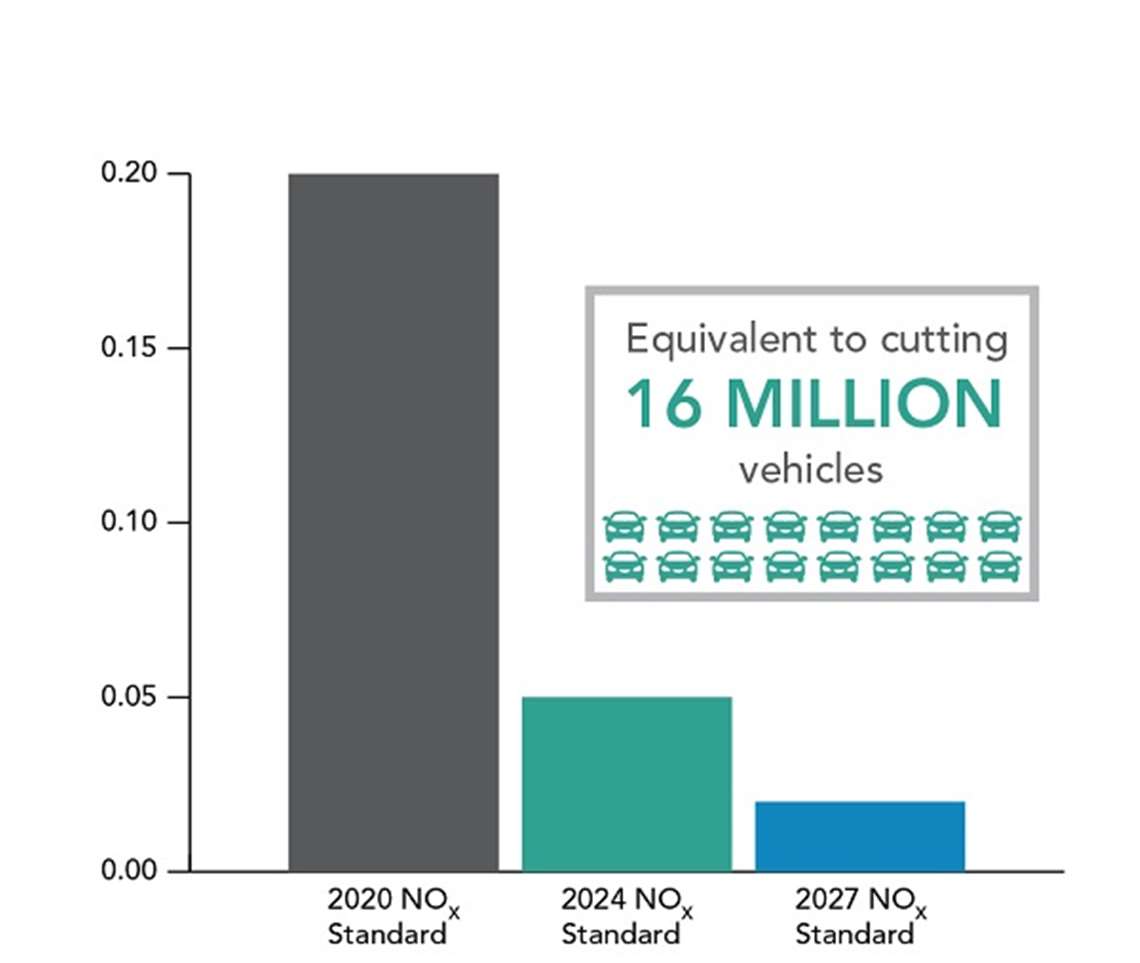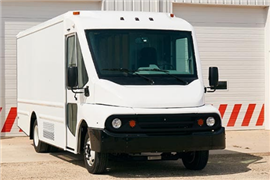California Adopts Omnibus NOx Rule For Trucks
01 September 2020

Regulation will cut NOx emissions by 90%, extend engine warranties, revamp testing procedures
The California Air Resources Board (CARB) has approved a multi-pronged regulation that the agency said will dramatically reduce smog-forming emissions from heavy-duty diesel trucks.
The Heavy-Duty Low NOx Omnibus Regulation will require manufacturers to comply with tougher emissions standards, overhaul engine testing procedures, and further extend engine warranties to ensure that emissions of NOx (oxides of nitrogen) are reduced to help California meet federal air quality standards and critical public health goals.
“Even as California ramps up the numbers of zero-emission electric and fuel-cell trucks on our roads over the next decade and beyond, tens of thousands of new internal combustion trucks will still be sold in our state,” said CARB Chair Mary D. Nichols. “This regulation ensures that conventional diesel trucks will run as cleanly as possible at every point in their duty cycle.
“It takes a significant bite out of smog-forming pollution in every region in the state, and will make a major contribution to cleaning the air in communities close to ports, railyards and distribution centers that are now most heavily impacted by pollution from heavy truck traffic.”
The regulation is expected to have a significant impact on communities adjacent to railyards, ports and warehouses that typically experience heavy truck traffic. These trucks often idle, move slowly and make frequent stops – all actions that increase NOx emissions. Today’s heavy-duty trucks do not control NOx effectively during such “low load” conditions, CARB said. The new standards will reduce NOx emissions by 90% or more when trucks are operating under these low load real-world operations.
Once it is fully phased in by 2031, the rule is expected to reduce NOx emissions in California by more than 23 tons per day. These NOx reductions are the equivalent of taking 16 million light-duty cars off the road in 2031, the agency said.
All components of the new rule will be phased in, allowing engine manufacturers time to prepare for compliance, CARB said. The NOx standards that engines must meet will be cut to approximately 75% below current standards beginning in 2024, and 90% below current standards in 2027.
The agency’s new rule drew a critical response from Jed Mandel, president of the Truck and Engine Manufacturers Association (EMA), which represents many of the leading manufacturers of internal combustion engines, zero-emission powertrains and on-highway medium- and heavy-duty trucks.
“CARB’s far-reaching Omnibus Low-NOX Rule is not technologically feasible or cost-effective,” Mandel said. “In addition, the requirements starting in 2024 fail to provide the statutorily required minimum lead time for manufacturers to develop the technologies.”
EMA added that the new Omnibus Low-NOX Rule will become effective in 2024, at the same time as the Advanced Clean Trucks regulations that CARB approved on June 25. The Advanced Clean Trucks rule mandates that manufacturers convert increasing percentages of their heavy-duty trucks sold in California to zero-emission vehicles. “The compounding and overlapping nature of the two regulatory mandates that CARB approved this summer threatens California’s commercial truck market,” Mandel said. “Instead of purchasing expensive, complicated and unproven new vehicles in California, truck operators and freight shippers are likely to maintain old trucks longer and seek solutions outside the state.
“EMA and its members stand ready to work with CARB and its staff to implement a credible NOX reduction program. A workable and implementable heavy-duty NOX program is attainable — one that addresses California’s environmental needs while preserving the availability of new commercial vehicles that trucking fleets in the state need to move goods in California. Unfortunately, the rule CARB adopted today is not it.”
POWER SOURCING GUIDE
The trusted reference and buyer’s guide for 83 years
The original “desktop search engine,” guiding nearly 10,000 users in more than 90 countries it is the primary reference for specifications and details on all the components that go into engine systems.
Visit Now
STAY CONNECTED




Receive the information you need when you need it through our world-leading magazines, newsletters and daily briefings.
CONNECT WITH THE TEAM












